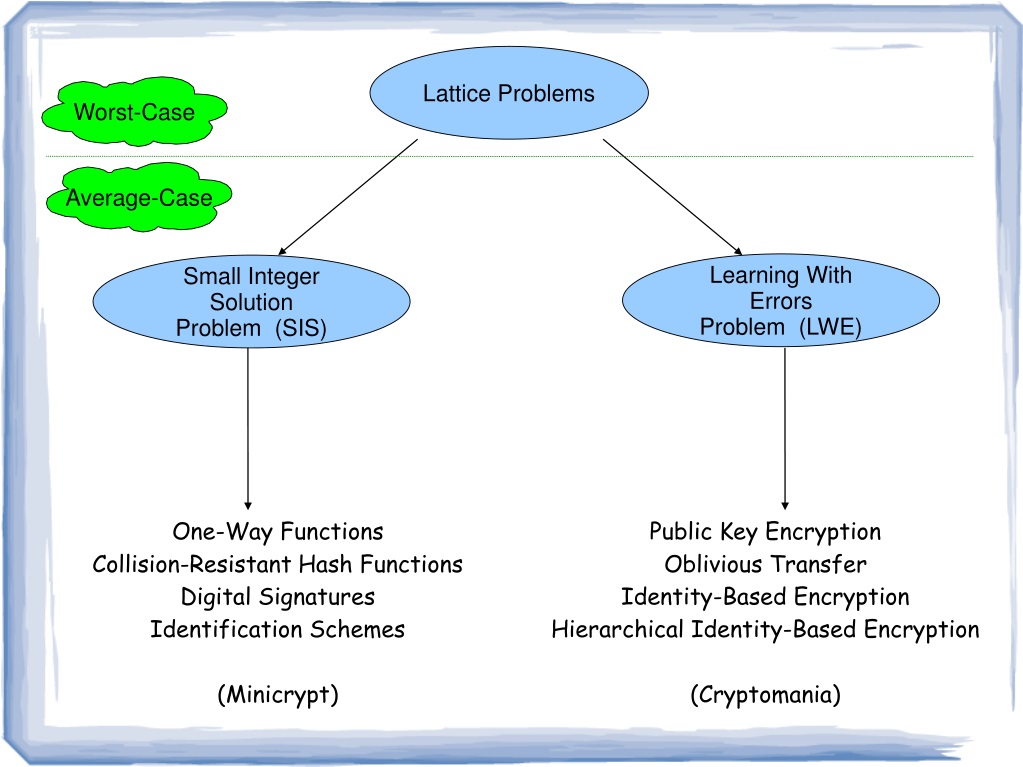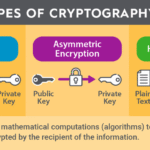Lattice-based cryptography is like a vast, intricate lattice of interconnected pathways, where the complexity of the structure provides robust security against various threats. As the digital world continues to evolve with the rapid advancement of technology, the need for secure systems has never been more paramount. Lattice-based cryptography, underpinned by the mathematical properties of lattices, emerges as a compelling solution. This article delves into the practical applications of this innovative cryptographic framework, elucidating how it fortifies modern digital infrastructures.
One of the most notable applications of lattice-based cryptography is in the realm of post-quantum cryptography. The advent of quantum computing threatens to unravel the security paradigms established by traditional cryptographic methods, primarily public key infrastructures. Lattice-based schemes, however, create formidable encryption algorithms that resist the onslaught of quantum attacks. Due to their inherent mathematical structure, these systems can withstand the capabilities of quantum algorithms, like Shor’s algorithm, which could potentially factor large integers and break RSA encryption. Thus, organizations are increasingly investing in lattice-based cryptographic protocols to future-proof their security infrastructures against quantum disruptions.
Beyond its prophylactic role against quantum threats, lattice-based cryptography facilitates secure multiparty computation (MPC). Imagine a group of individuals wanting to compute a function over their collective private data without revealing that data to one another. Lattice-based cryptographic techniques enable this by securing the required computations within the lattice structure. As a result, sensitive information such as personal data or proprietary business information can remain confidential while still allowing participants to obtain the desired results. This capability is particularly vital in sectors like healthcare, finance, and legal services, where data sensitivity is paramount.
Another captivating application lies within the domain of fully homomorphic encryption (FHE). FHE allows computations on encrypted data, enabling processing without the need to decrypt it first. This transformative capability paves the way for secure cloud computing. Consider a scenario where an organization engages with a cloud service provider; they can utilize FHE to upload encrypted datasets and perform computations directly on the cloud servers without ever exposing the underlying data. As organizations grapple with the paradox of outsourcing computation while safeguarding privacy, lattice-based FHE presents a beacon of hope. The enciphered computations maintain confidentiality, a crucial requirement in an age increasingly defined by data breaches.
In the realm of secure voting systems, lattice-based cryptography proves invaluable. The integrity of democratic processes hinges on the confidentiality and accuracy of each vote cast. By implementing lattice-based protocols, electoral systems can ensure that votes are encrypted upon submission and remain opaque during the counting process. The lattice structure reinforces the security of this process, making it increasingly resistant to tampering or coalition attacks. Given the ongoing concerns surrounding electoral integrity, the application of lattice-based techniques in voting systems is not just a fanciful ideal but a necessary evolution in securing the democratic process.
Smart contracts and blockchain technology represent yet another field where lattice-based cryptography gains prominence. As decentralized technologies proliferate, the need for secure, tamper-proof transactions becomes crucial. Lattice-based digital signatures can enhance the security of blockchain transactions significantly. By fortifying the authentication processes within these networks, lattice-based signatures render them more resistant to potential collusion or fraudulent manipulation. This not only builds trust among users but also bolsters the overall integrity of the blockchain ecosystem.
In addition to these applications, lattice-based cryptography enables the development of privacy-preserving data sharing mechanisms. Industries that rely on sharing sensitive information, such as finance, healthcare, and research, face challenges related to data privacy concerns. By utilizing lattice-based techniques, organizations can create frameworks that allow for the secure sharing of aggregated data. This fosters collaboration while protecting individual privacy rights. Furthermore, such methods can be instrumental in complying with stringent data protection regulations, fostering a culture of trust between entities engaged in data transactions.
The unique appeal of lattice-based cryptography also extends to the area of identity protection and authentication systems. Traditional systems often rely on password-based mechanisms that are vulnerable to various attack vectors, including phishing and brute force attempts. By leveraging lattice-based constructs, organizations can implement robust authentication protocols that utilize cryptographic tokens or attributes tied to an individual’s identity without divulging sensitive information. This ensures that only the rightful owner can access their data or services, significantly reducing the risk of identity theft.
Lastly, the ascendancy of the Internet of Things (IoT) introduces unprecedented challenges in terms of security and data integrity. Lattice-based cryptography can secure the myriad of devices interconnected within an IoT ecosystem. As these devices communicate and share data, lattice-based models can enforce stringent security measures that prevent unauthorized access and ensure that data remains private. This not only enhances the functionality of IoT applications but also threads a protective fabric that upholds the integrity of sensitive data flowing across networks.
In conclusion, lattice-based cryptography represents a robust and versatile solution in an increasingly complex digital environment. From securing multiparty computations to enhancing the integrity of voting systems, its applications are as diverse as they are critical. As organizations and individuals alike navigate the intricacies of data privacy and security, lattice-based frameworks stand poised to usher in a future where digital interactions can occur with unwavering confidence. By embracing the lattice, we embrace a formidable guardian of our digital age.









Leave a Comment